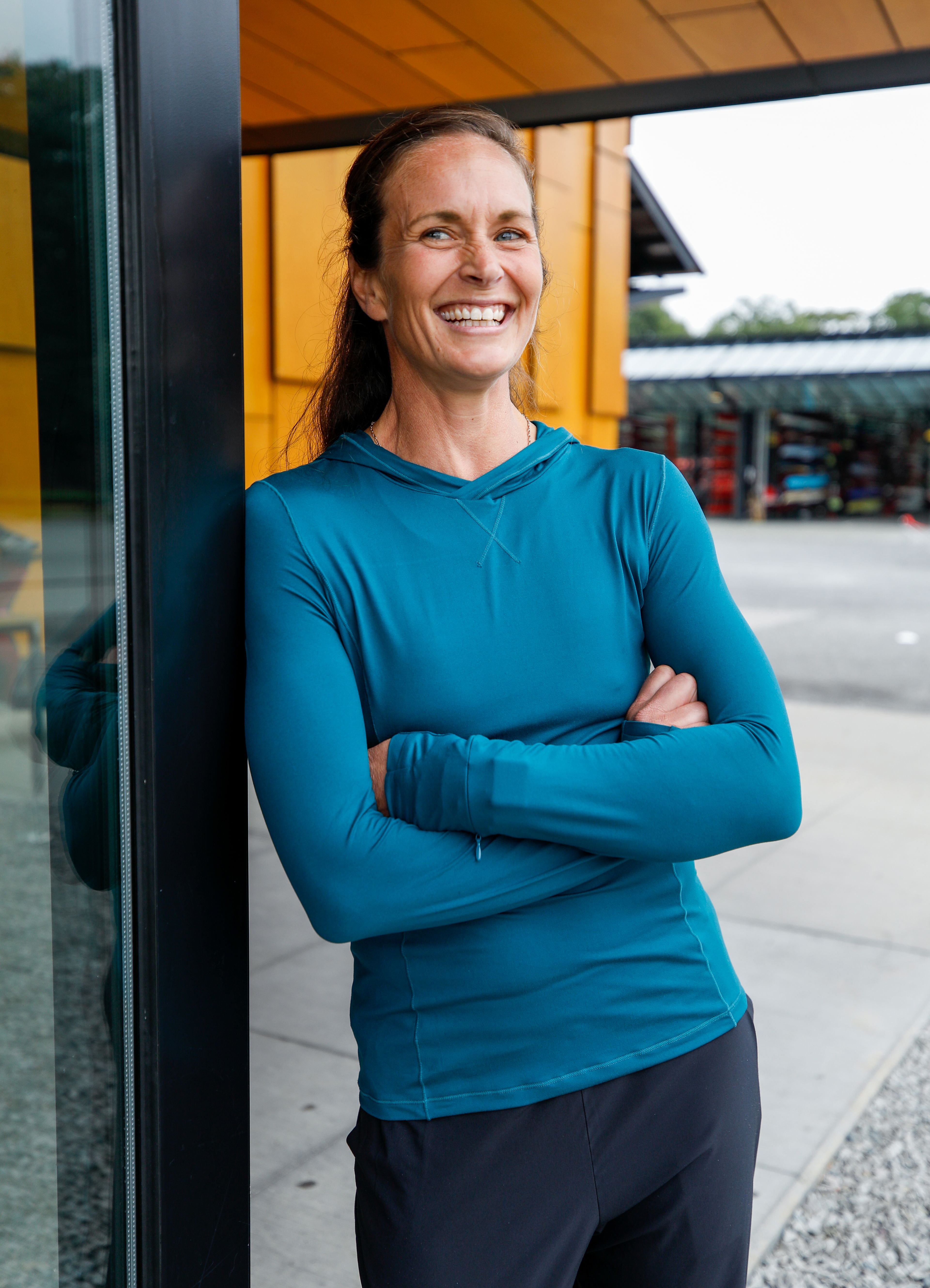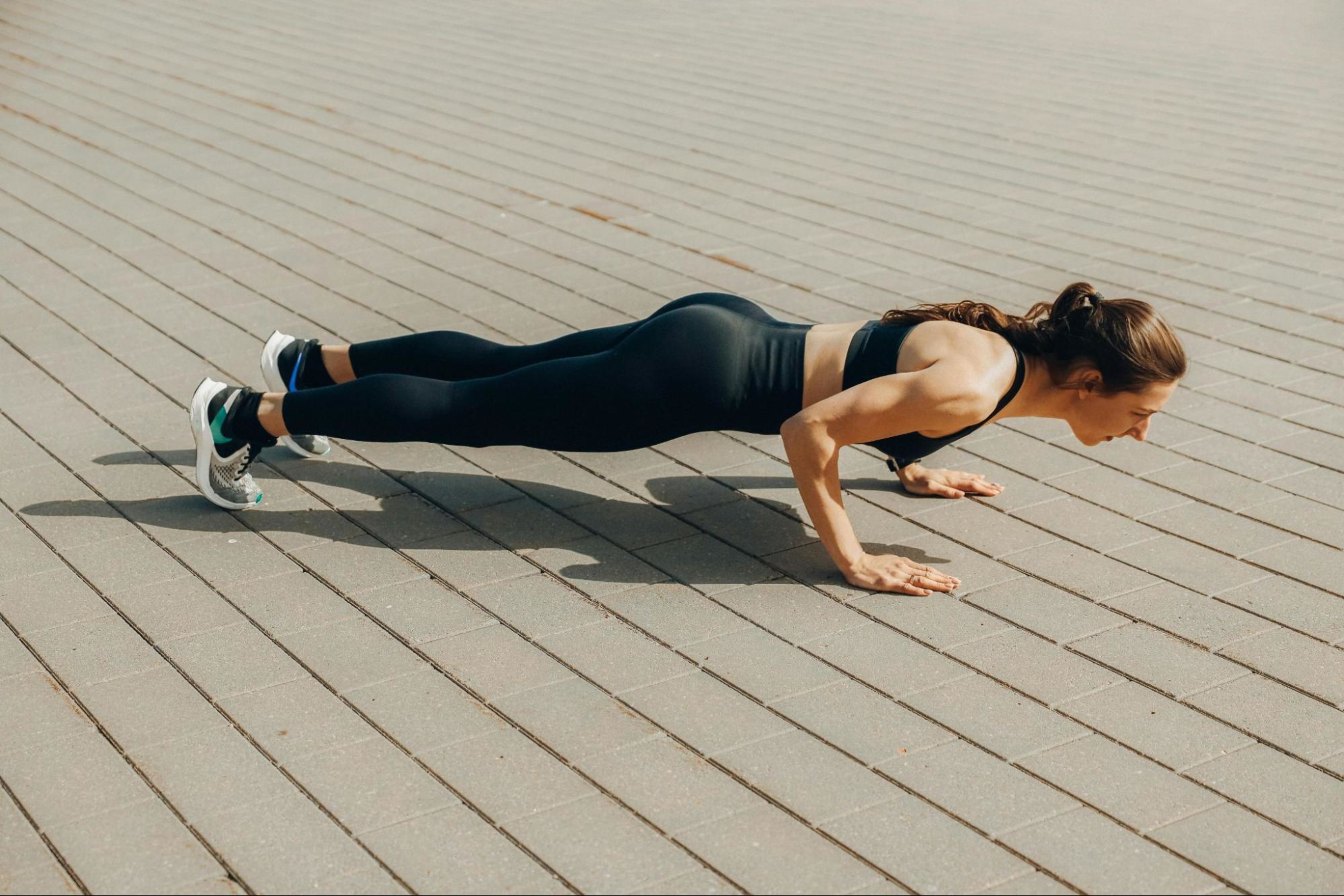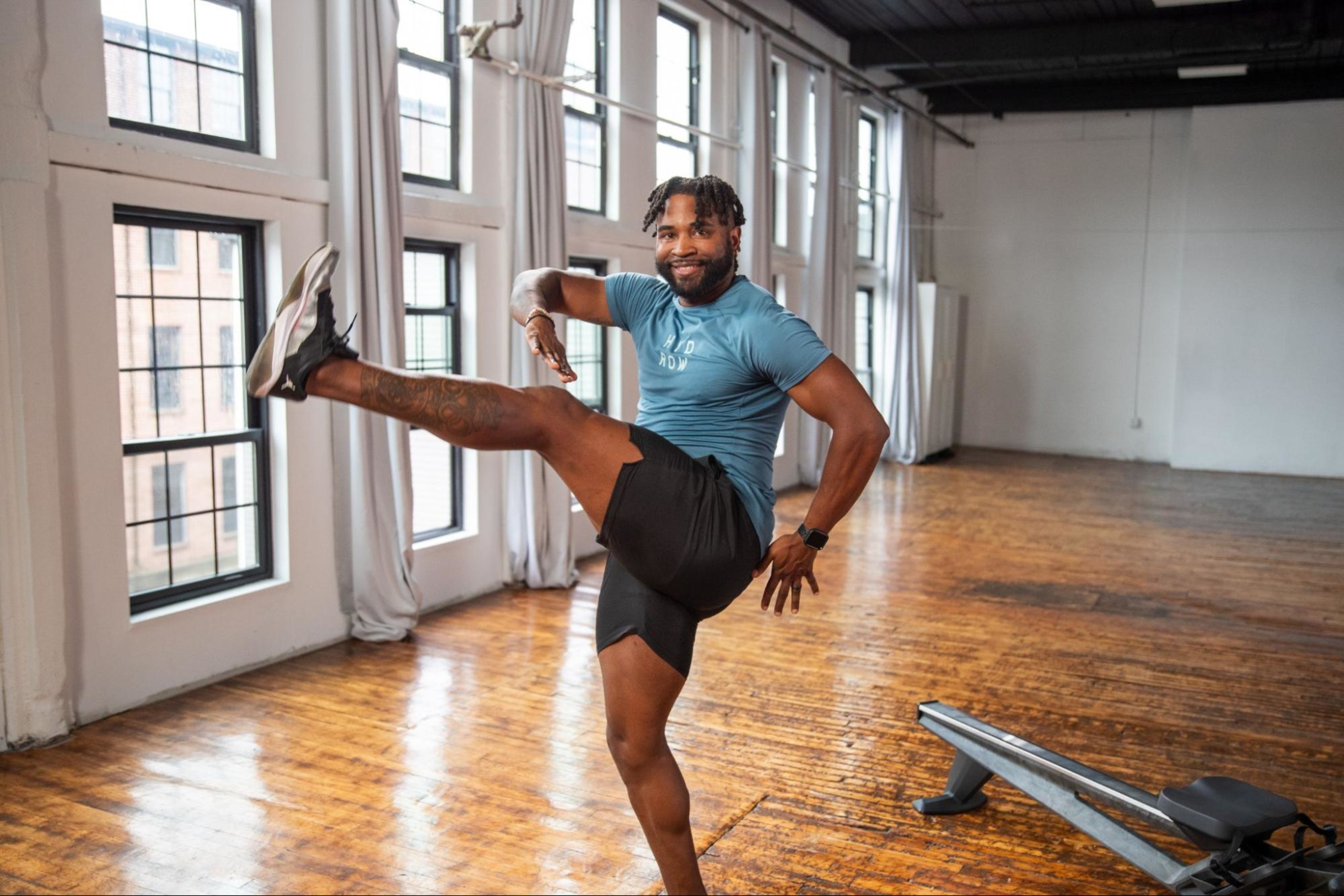The Best Full-Body Workouts for a Well-Rounded Fitness Routine
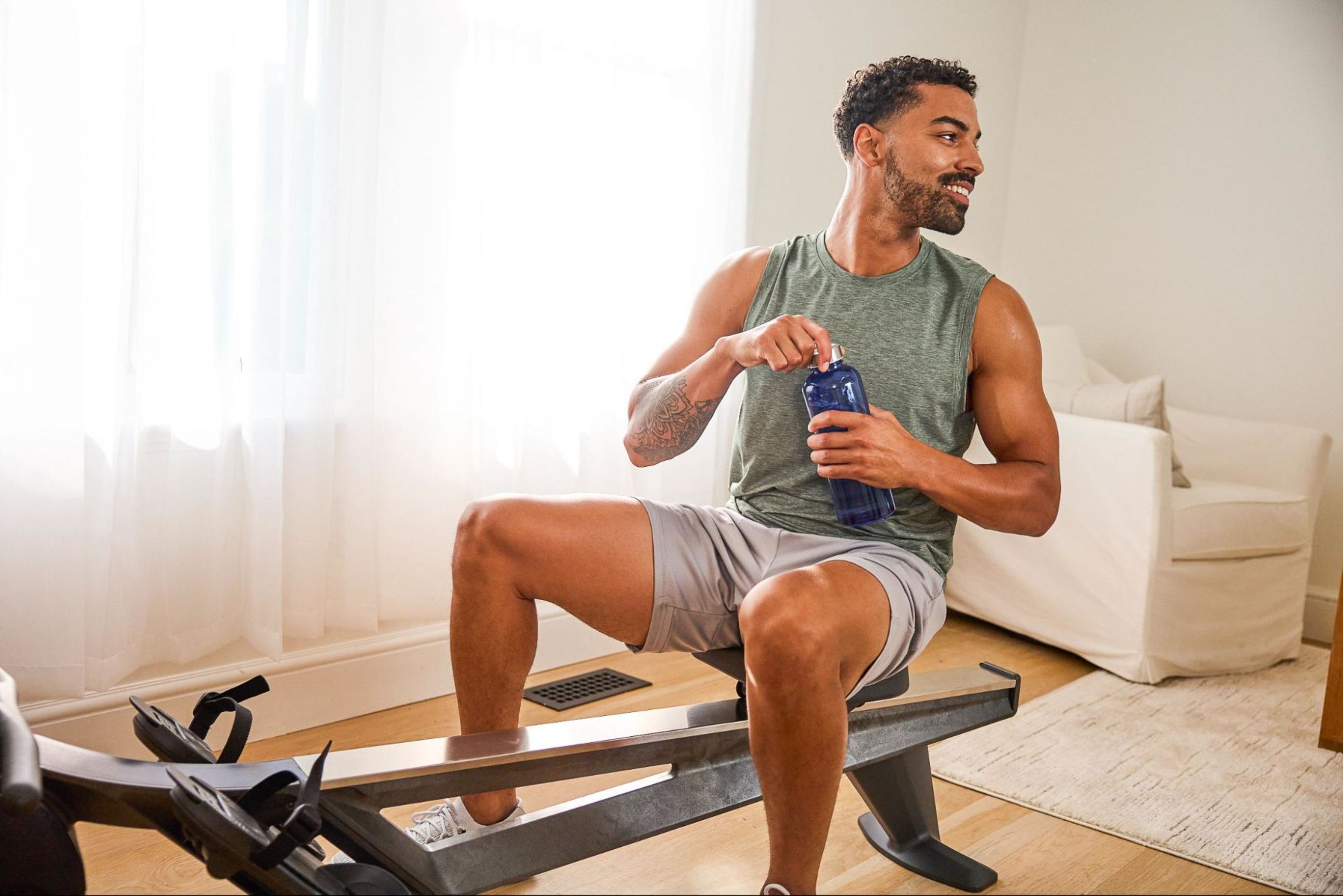
In today’s hustle and bustle, finding the time to squeeze in a workout for each muscle group can seem daunting. Instead, focusing on a full-body workout is an excellent way to stay in shape and challenge your whole body all at once. As a result, you’ll burn more calories in less time and develop a well-rounded physique.
If you’re interested in exploring full-body workouts that will help you stay in shape, look no further! There are plenty of ways to approach full-body workouts, whether that’s a HIIT class, at-home calisthenics, or even jumping on a rowing machine.
This blog will cover:
Let’s jump in!
What are full-body workouts?
A full-body workout is an exercise routine that engages multiple muscle groups in a single session. As opposed to workouts that isolate one muscle group like arms, shoulders, or legs, a full-body workout challenges muscles across your body all at once.
A well-structured full-body workout can involve both strength and cardiovascular exercises. For example, on a Hydrow rower, you use 86% of your muscles in a single stroke across your legs, core and arms. During the rowing stroke, you perform a combination of pushing and pulling through a full range of movement, which builds both muscular endurance and strength. All the while, your heart is pumping, providing cardiovascular conditioning. Rowing makes for an incredible full-body workout with whatever time constraints you may have.
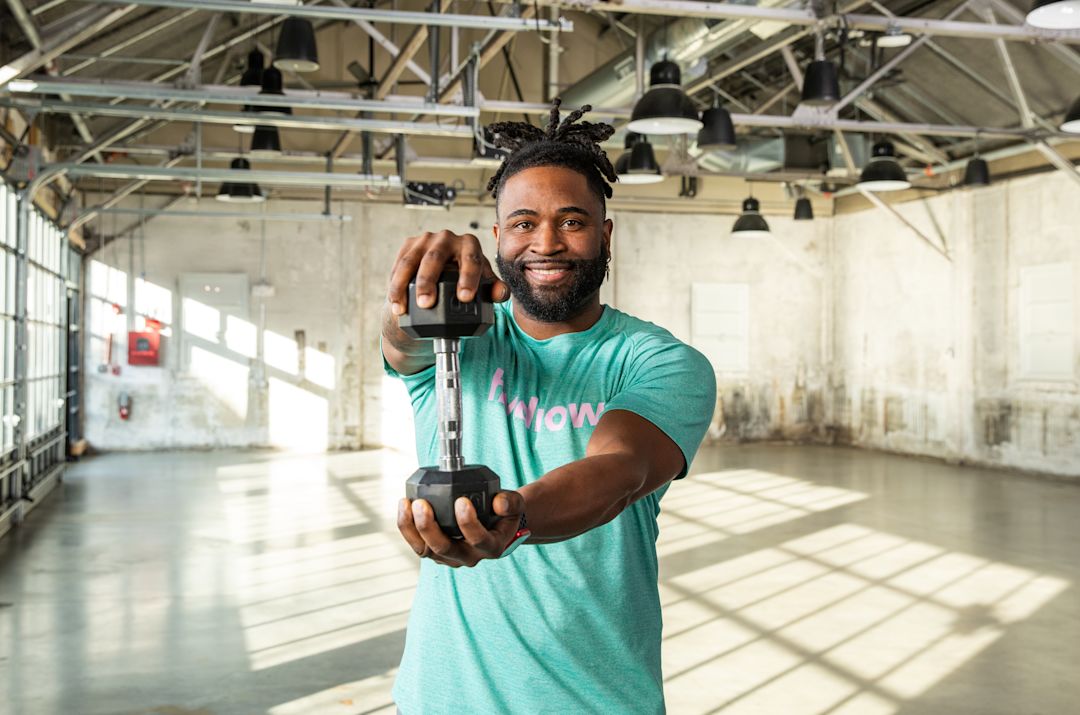
Explore Hydrow's library of strength training workouts.
The benefits of full-body workouts
If you’re debating adding full-body workouts to your fitness routine, here’s why they might be the best choice for your fitness goals:
Time efficiency
Balanced strength development
Increase calorie burn
Improved cardiovascular health
Variety and flexibility
1. Time efficiency
Full-body workouts are ideal for anyone who has difficulty fitting exercise into their schedule. In just a single session, you can target all your major muscle groups of your lower and upper body rather than a type of exercise that only focuses on one area such as the lower body in running or cycling. As a result, you can engage more muscles in a full-body workout covering all the bases in less time, which could free you up to focus on other areas in your life.
2. Balanced strength development
By focusing on multiple muscle groups, full-body exercises promote overall strength and muscle development. This balanced approach prevents you from overdeveloping certain muscle groups while neglecting others. Try a full-body workout to prevent imbalances in your physique, which can lead to poor posture or injury.
3. Increased calorie burn
Engaging more muscles at once means your body is working harder, leading to a higher calorie burn during and after your workout. If fat loss is one of your goals, this is great news! The afterburn effect is more pronounced after full-body workouts, which means your body continues burning calories long after your workout ends.
4. Improved cardiovascular health
Many full-body exercises also elevate your heart rate, providing a cardio challenge. Activities like rowing, burpees, or mountain climbers combine strength and cardio, allowing you to improve your endurance while also building muscle. Two birds, one stone!
5. Variety and flexibility
One of the greatest advantages of full-body workouts is the variety they offer. You’re not limited to a single muscle group of exercise type, so you can keep your workouts fresh and engaging. Whether you’re lifting weights, rowing, or doing bodyweight exercises, you can modify and adapt your full-body workout to satisfy your fitness goals.
5 full-body workouts to incorporate into your fitness routine
Sold on the perks of full-body workouts but not sure where to start? Here is a great list of exercises you can try that will be great additions to your fitness routine:
Rowing
Squat to press
Burpees
Squat, inchworm, push-ups
Mountain climbers
1. Rowing
We’d be remiss if we didn’t tout the benefits of rowing, as it’s one of the best complete-body workouts. With every stroke, you engage your core, legs, and upper body. Consequently, it’s an effective way to build muscle strength and improve cardiovascular fitness. Rowing is also low-impact, which means you can get in a powerful workout without putting undue stress on your joints.
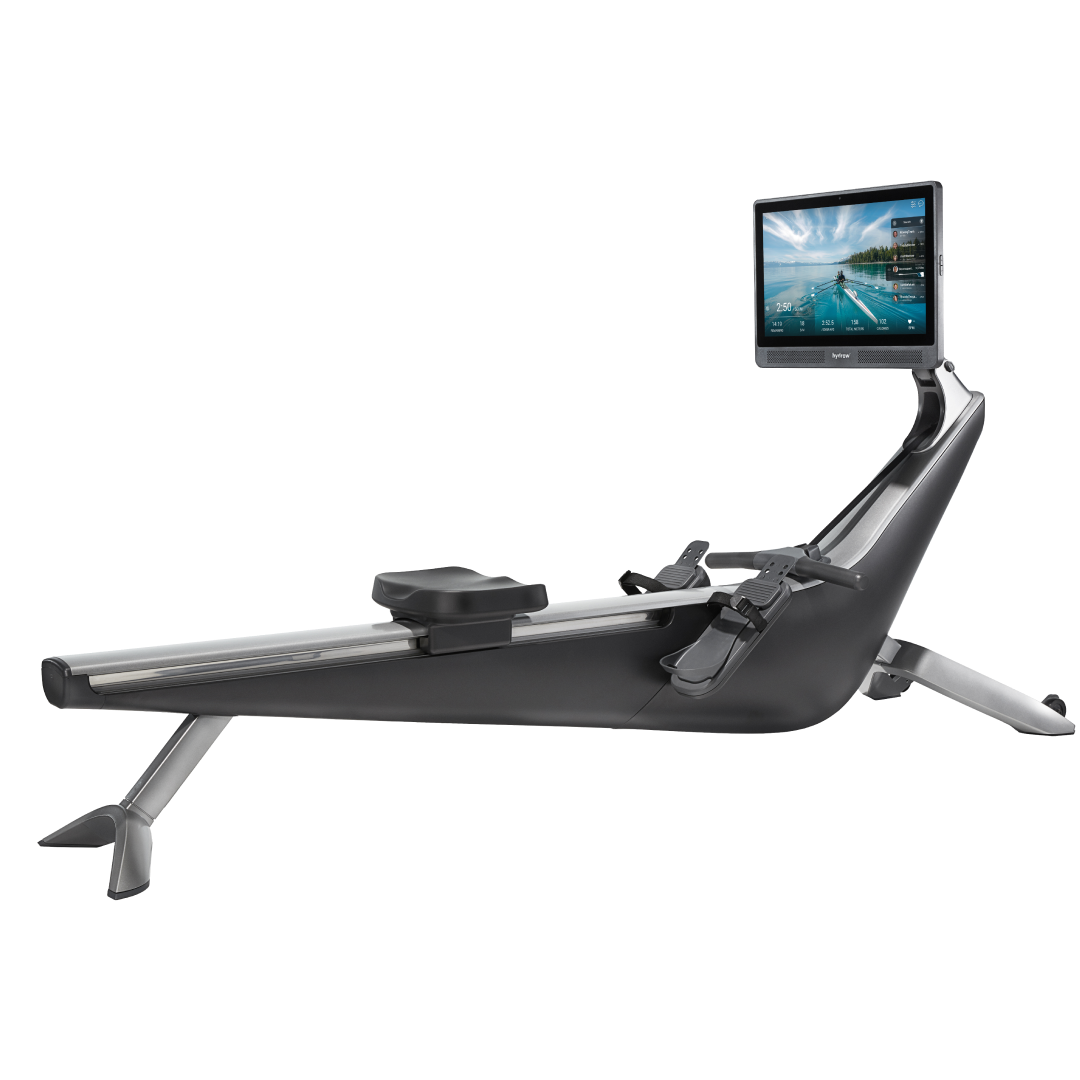
Cardio and strength, combined
Burn calories and build muscle with steady, natural movements.
2. Squat to press
This movement begins with a basic squat, targeting your legs and glutes, and then transitions into an overhead press to engage your shoulders and arms. While it typically involves weights, it’s a fantastic combination of lower- and upper-body strength work while also engaging your core.
3. Burpees
Yes, we know they’re tough, but they’re also excellent for conditioning and improving endurance while torching calories. To complete a burpee, start by standing, then drop into a squat, kick your legs out to form a hand-plank position, and lower into a push-up. Then, reverse through the motions and end with a jump. Try 10 in a row! If you’re still standing, add a few more.
4. Squat to inchworm to push-up
Another great exercise is the combination of squats, inchworms, and push-ups to target your entire body. Start by standing tall, then lower yourself into a squat position. Place your hands on the floor, then walk them forward into a high plank position. From there, slowly lower your chest toward the ground while maintaining a straight line from your head to your feet. Then, walk your hands back toward your feet and return to standing.
5. Mountain climbers
Mountain climbers are a bit more cardio-intensive and will engage your core, shoulders, arms, and legs, making them a great addition to your workout by building coordination and endurance.
Start by lowering your body into a hand-plank position and then pulling one leg toward your chest by bending the leg at the knee. Repeat on the other side while engaging your core to keep your hips and back flat.
To intensify these, you can try the same movement in a forearm plank.
An example of a 20-minute full-body workout
As we’ve emphasized, a full-body workout is an excellent addition to your fitness journey and can easily be slipped into a busy day.
Warm-up (3 minutes)
Circuit 1 (5 minutes)
Rowing (5 minutes)
Circuit 2 (5 minutes)
Cooldown (2 minutes)
1. Warm-up (3 minutes)
Start with a light row on your rowing machine, gradually increasing intensity.
2. Circuit 1 (5 minutes)
Repeat the following exercises for as many rounds as possible in five minutes (keeping form and incorporating rest where needed):
10 push-ups
15 squats
30 seconds of mountain climbers
3. Rowing (5 minutes)
Push hard for a 30 second sprint at maximum effort on your rowing machine, followed by 30 seconds of easy rowing. Repeat this cycle five times.
4. Circuit 2 (5 minutes)
Repeat the following exercises for as many rounds as possible in 5 minutes (keeping form and incorporating rest where needed):
10 burpees
20-second plank
10 squat to press
20 jumping jacks
15 seconds of plank
5. Cooldown (2 minutes)
Complete two minutes of light rowing at a relaxed pace, followed by stretching to ease tension in your muscles.
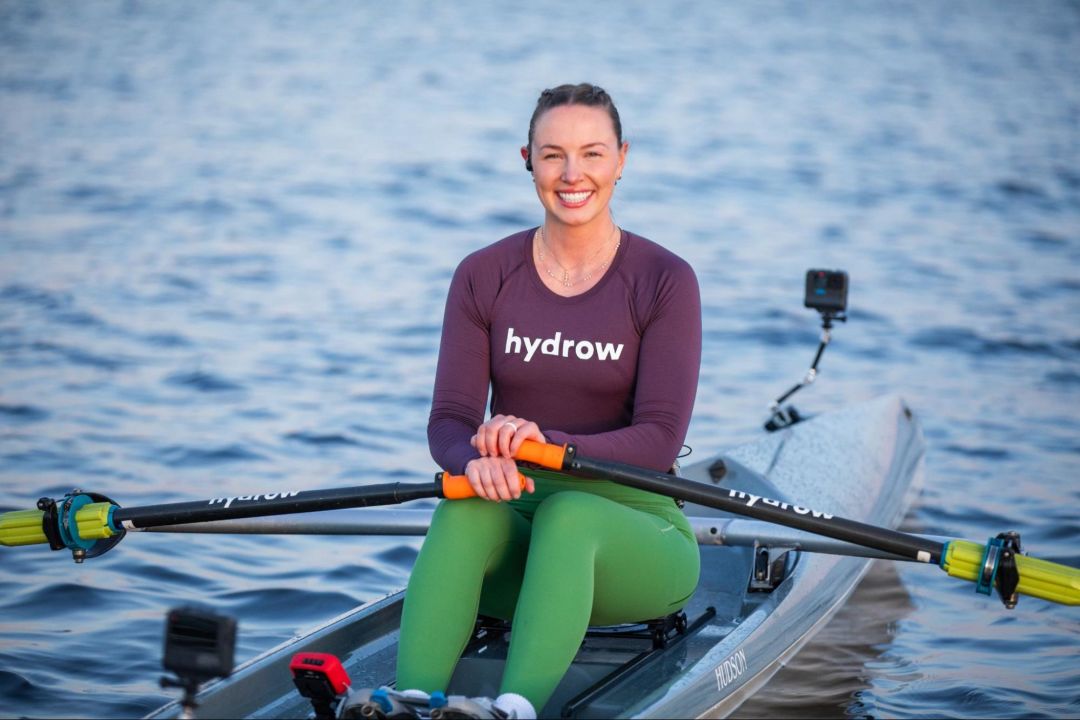
Did you know?
Over 90% of Hydrow members are still active one year later.
Tips for doing full-body workouts
To maximize the benefits of your full-body workouts, it’s a good idea to keep the following tips in mind:
Prioritize form and rest
Start with bodyweight exercises
Incorporate variety
Listen to your body
1. Prioritize form and rest
It’s easy to push yourself too hard, especially during fast-paced routines. Make sure you’re prioritizing proper form over speed or intensity to avoid any injuries. Quality movements will always give you better long-term results. Remember to give your muscles time to recover in between sets and also by taking rest days in between intense exercise days.
2. Start with bodyweight exercises
If you’re new to full-body workouts, start with bodyweight exercises like squats, burpees, and push-ups. Once you’re comfortable with these movements, you can progress to adding weights like dumbbells or kettlebells to add intensity.
3. Incorporate variety
Switching up your exercises not only keeps things interesting, but it also ensures you’re challenging your muscles in new and different ways. This will help you to avoid plateaus, keep building muscles, and stay motivated.
4. Listen to your body
Pay attention to how your body feels. If something doesn’t feel right, adjust your movement or take a break. Consistency is important, but so is safety.
You’re ready to go!
Full-body workouts are an excellent way to get in shape, offering numerous benefits—from balanced strength development to improved cardiovascular health. Whether you’re just getting started or looking to break a plateau, incorporating exercises like rowing, burpees, or squat presses can help you achieve your goals faster.
Looking for a smarter way to exercise your entire body? Rowing activates 86% of your muscles with every stroke, making it one of the most efficient ways to build total-body strength. In just 20 minutes on a rowing machine, you can get a full-body workout that boosts energy, builds endurance, and helps you move better—on and off the rower.
And with Hydrow, it’s easier than ever to stay consistent. No commute. No waiting for machines. Just expert-led workouts you can do from home, whenever it works for you. Choose from rowing, strength training, mobility, yoga, Pilates, and circuit training workouts, all designed to help you move better and feel stronger, long-term.
Our workouts are filmed on location in stunning waterways around the world and led by world-class Athletes who coach you through every stroke and rep. And with over 5,000 workouts ranging from beginner to advanced, it’s easy to keep progressing no matter your level.
Every movement adds up. Start building strength that lasts with Hydrow.

Real strength keeps moving
Learn how working out with Hydrow can help support a fuller, more active life.
